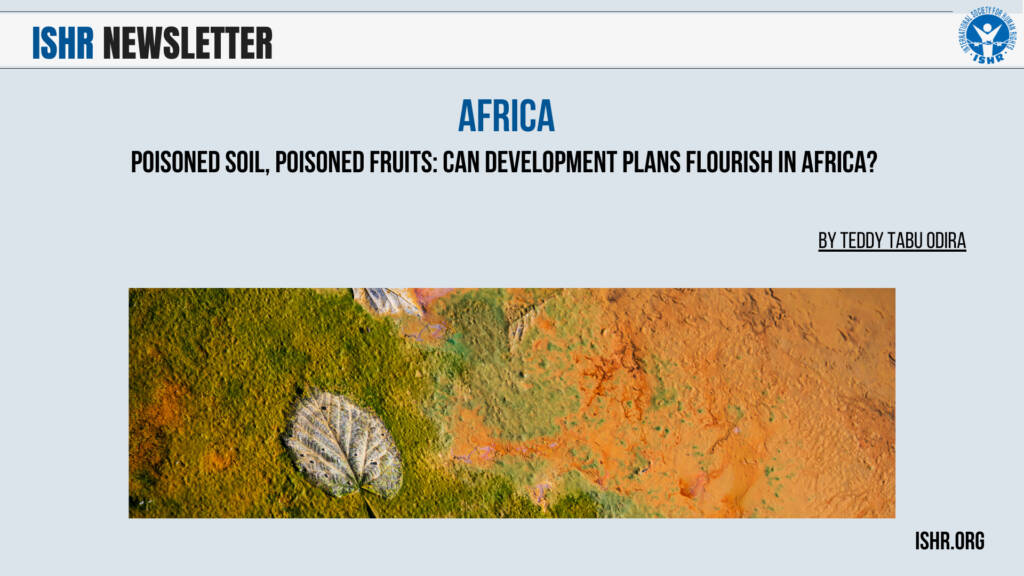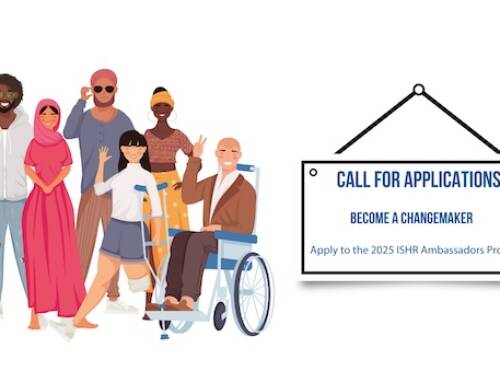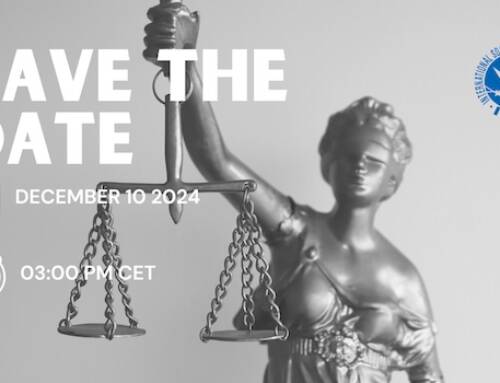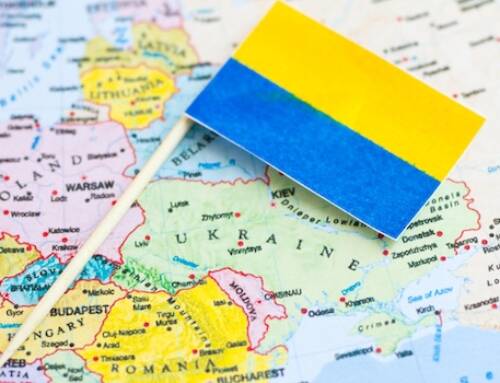Africa


Africa: Poisoned Soil, Poisoned Fruits: Can Development Plans Flourish in Africa?
On 30th of May 2024, I announced through my X page that I will be having a panel discussion on the role of youth in diplomacy and international law in achieving SDGs and Africa’s Vision 2063. This sparked a debate on whether SDGs, a plan made for Africans by non-Africans, can co-exist with Africa’s Vision 2063. My friend, John Nyanje, famously known as Nyanje wa Nyanje, asked the question, “Can a poisoned tree produce more poisoned fruits?” It is in this context that this paper is based.
In 2012, at the United Nations Conference on Sustainable Development in Rio de Janeiro, the Sustainable Development Goals (SDGs) were born. SDGs were officially adopted by the United Nations in 2015 as a universal call to action to end poverty, protect the planet, and ensure that by 2030 all people enjoy peace and prosperity. The SDGs comprise 17interlinked goals, each designed to address a broad range of development issues. These goals encompass No poverty. Zero hunger, good health and well-being, quality education, gender equality, clean water and sanitation, affordable and clean energy, decent work and economic growth among others.
Africa’s Agenda 2063, on the other hand, is a 50-year strategic framework with the main objective being to guide Africa’s development to achieve the vision of The Africa We Want. Agenda 2063 is aimed at being Africa’s blueprint and master plan for transforming the continent into the global powerhouse of the future. Vision 2063 and the SDGsalignment is evident in their overlapping objectives and shared focus. Both frameworks emphasize the importance of inclusive growth, social equity, environmental sustainability, and good governance.
Scholars such as Julian Pecquet and Steven J. Klees have either criticized or foreseen the failure of SDGs in Africa. They opine that among other things SDGs are non-binding, vastly underfunded, not urgent enough, too vague, too many, not immune from politics etc. This paper opines that with Africa’s Agenda 2063, its main downfall is that Africa does not work well with multinational institutions. Some African countries, Kenya and South Africa, for example, also have their own national development goals. The foreseen failures of Kenya’s Vision 2030 and South Africa’s’ National Development plan 2030 form a big part of the failure of Development plans from AU’s Agenda 2063 and UN’s SDG perspective. Candidly, how do you expect a tree to bear fresh fruits if it was planted on poisoned soil.
Failure of SDGs in Africa
From a Third World Approach to International law (TWAIL) point of view, SDGs are a western idea imposed on Africans and that by itself would bring criticisms as to whether they would work in the continent. I, being a believer of the TWAIL, also holds the same opinion except for the fact that all 17 SDGs are common problems in Africa. This paper does not question the good intentions of SDGs but does question their effects in Africa. Having SDGs appears to be sufficient for compensatory legitimation; providing the needed resources and bringing about the needed structural changes to fulfill the promises of SDGs. So, is the problem in execution or was there just a change of focus and realities? To understand this better, we will go back to Millenium Development Goals (MDGs) which are the predecessors of SDGs. Scholars such as Jason Hickel and Steven J. Klees opine that we did not achieve any of the MDGs and we are not on target to achieve any of the SDGs by 2030. They give an example of those who say we cut extreme poverty in half are wrong.
Just like MDGs, SDGs are not binding to African countries. It is a long running joke that SDGs should have been named Sustainable Development Wishes because they are more wishes than actual goals. For African Countries, once they understand them as wishes and having no accountability mechanism where no one is responsible for their implementation even a change in governments will mean a change of focus. The world has also seen a lot of changes, the wars in Russia and Ukraine, Palestine and Israel, Covid 19 among other unfortunate events have seen funding for SDGs reduced significantly. Africa has also had its fair share of problems. The war in Congo, and multiple military coups such as Mali 2020, Guinea 2021, Niger 2023, Burkina Faso’s two putsches in 8 months among others bring us to a harsh reality that the continent might not be stable enough to see the full realization of SDGs by 2030.
In Africa, even in countries that are not at war, SDGs are not urgent enough. The criticism of the MDGs was that they were too socially oriented around issues like poverty reduction, as opposed to thinking about prosperity and industrialisation. The same problem still hits the actual realization of SDGs in Africa. Additionally, 17 goals are too many to be archived all at once in Africa. In a 2021 commentary piece, Nwuke stated that a smaller set of achievable goals will enable policymakers in Africa to achieve their realization. Additionally, every other election, politicians in Africa promise some “development goals” which they intend to focus on. In Kenya, for example, the Uhuru regime promised the realization of the big 4 agenda which focused on Food Security, Affordable Housing, Manufacturing and Affordable Healthcare. When President Ruto came into office, he focused on the bottom up economic transformation agenda. What this does is shift the focus every time a new parliament is elected.
Lastly, from the very beginning, critics said that SDGs don’t take seriously their own utopian promises that they keep repeating them repeatedly for different sub-groups. Unlike MDGs, critics pointed out that SDGs are so encyclopedic that everything is top priority, which means nothing is a priority. In 2015, William Easterly, a professor of economics at New York University, stated that beyond the unactionable, unquantifiable targets for the SDGs, there are also the unattainable ones. I would agree with him that some SDGs like ending poverty in all its forms and dimensions, universal health coverage, ending all preventable deaths, ending all forms of discrimination against all women and girls everywhere,…etc are so utopic, especially in the African context. Just to reiterate, I share such ideals with great enthusiasm, however, the sad reality in the continent makes these goals unattainable by 2030.
Fall of Africa’s Agenda 2063
Those who know me know that I love Spider Man, especially the scene in which the villain, Green Goblin tells Spiderman:
“Wake up little spider, no you’re not dead yet just paralyzed…Well, to each his own. I chose my path; you chose the way of the hero. And they found you amusing for a while, the people of this city. But the one thing they love more than a hero is to see a hero fail, fall, die trying. In spite of everything you’ve done for them, eventually they will hate you.”
This is the fate that hits the African Union (AU) and its operations in Africa. To me, AU is a paralyzed hero. The paralyzed hero has a slogan ‘The Africa we want’ which was enshrined in Agenda 2063 – a shared ambitious vision for inclusive growth and sustainable development for Africa. The vision seeks to build on and accelerate past implementation and existing continental initiatives for growth and sustainability. Agenda 2063 contains seven aspirations, 20 goals and many priorities.
Many would like to think that AU is an institution that brings all African nations to speak with one voice. This is far from the truth. There is a lack of commitment among the political allies that are mandated to advance Africa’s regional agenda. The lack of political will by leaders is a serious problem. Professor Adeoye Akinola, an expert on African affairs, while speaking to VOA Africa stated that in many cases, the politicians who do not have the goodwill are the same politicians who form the political elite mandated to champion the direction of the African Union. This makes it difficult for the AU to act accordingly against challenges faced by the continent. Prof Akiola also stated that there is this understanding in Africa that sovereignty of AU members must be respected, but several African leaders who are members of the AU are perpetrators of the challenges faced by the continent.
African states take respect for national sovereignty and the principle of non-interference in the internal affairs of other states seriously. This makes Multinational institutions such as the AU and even the Regional Economic blocs hard to govern. Partly because they have not been given the full legitimacy they require. In addition to not giving AU the legitimacy it requires, the 2023 Corruption Perceptions Index (CPI) released by Transparency International indicates that Africa is consistently marked by its poor performance, with most states showing stagnation or failing to make progress against corruption. They ranked most states as the most corrupt in the world. What this does to Agenda 2026 is that it erodes public trust and hampers the efficient allocation and utilization of resources.
How do you then tell a continent that grapples with a lot of unsustainable debt that it has to end poverty. Most African countries rely on export of raw materials, this makes them very vulnerable in the global market. In countries such as Kenya, the President has resorted to tax anything that moves to sustain the debt. As already stated, many countries in Africa have either political unrest or war, AU has been ineffective in resolving these conflicts. The conflicts not only cause human suffering and poverty but also destroy infrastructure and divert resources away from development. AU itself has its own financial challenges. Many African states do not adhere to the financial obligation. This makes AU vulnerable and dependent on donors. AU’s dependency on these external funding undermines its ability to independently drive Africa to the development agenda.
Kenya’s Vision 2030
Vision 2030 is Kenya’s long-term vision whose goal is to “create a globally competitive and prosperous nation with a high quality of life by 2030, that aims to transform Kenya into a newly industrializing, middle-income country providing a high quality of life for all its citizens by 2030 in a clean and secure environment”. This development plan has 4 pillars: Economic Pillar, Social Pillar, Political Pillar, and Enablers and Macro Pillar. Kenya Vision 2030’s First Medium-Term Plan 2008-2012 (MTPI) succeeded the Economic Recovery Strategy for Wealth and Employment Creation, 2003-2007, as the national Medium-Term Plan.
On 10th June 2024, the Kenyan government launched the fourth and final segment of the Kenya Vision 2030 Plan. According to Interior Cabinet Secretary Kithure Kindiki, the plan covers the 2023 to 2027 period. Interestingly, Kindiki stated that it is aligned with the Bottom-Up Economic Transformation Agenda pursued by President Ruto’s Kenya Kwanza administration. He stated, “The BETA Plan envisages investments in agriculture, health, housing, businesses and the digital and creative economies to power the economic, political and social pillars of Kenya Vision 2030.”. He also emphasized that, “During the MPTV IV Plan cycle, the Government will upscale the already commenced programs and projects to boost production in value chains that put more money in the pockets of citizens.” Dearest reader, don’t you find this ironic? Is this the same government that passed the Finance Act 2023 and is on the verge of passing the Finance Bill 2024 with an aim of squeezing the Wanjiku’s pockets dry with taxation that themselves have a hard time explaining on live television? In as much as Tax Reforms were also mentioned in Vision 2030, how then is BETA allowing those who are at the bottom of the pyramid to cry more than those who are at the top?
Critics have noticed the poor drafting of Vision 2030. In a bid to harmonize it with SDGs and Agenda 2063, it was noticed that the document does not number the goals, nor does it do so for the objectives/outcomes/ targets. In many instances, multiple items are included in a single line delimited by semi-colons making many targets invisible within the matrix as illustrated above. Many targets in the implementation matrices of contain language that makes it difficult to tell what the ambition was regarding the specific program/project making it impossible to quantify the contribution to Vision 2030.
Can a Development Plan Work in Africa?
With the harsh realities of the continent, can we be developed? If we can, who should take responsibility or are we trying to ride a dead horse? To understand this better, how can we have a tree grown on fertile soil to produce good fruits? The answer is not straight forward. Historically, African countries have had development plans, the best example to illustrate this is the case of Ghana. President Nkrumah in 1963/1964-1967/1970, under the CPP government, implemented his second and most famous 7 years development plan. The plan was titled Seven-Years Development Plan for National Reconstruction and Development. This plan compared to the pre-colonial development plans and his first 2-year plan was more comprehensive, robust, inclusive, decentralized, and strategic. Sadly, after the shameful coup which toppled Nkrumah’s regime in 1966 the new regime came up with another two-year development plan spanning from 1968-1970. Unfortunately, all the development plans introduced by the NLC failed to meet the set goals. This resulted in hardship, strikes, and economic discontent among the masses. Meredith M, in his book, “The Fate of Africa: A History of Fifty Years of Independence,” stated that political turmoil and governance issues were major obstacles to the success of early development plans.
From this we can comfortably state that the key factors for success of development plans in Africa manifests itself from having good governance and strong institutions, political stability, economic diversification, human capital development, and infrastructure development. These ideas, however, sound very utopic, especially from a continent that still struggles with matters such as corruption and mismanagement, debt, resource constraints and environmental degradation. To sum it up, we are far from The Africa we Want. My opinion remains the same; to fully have development plans work in the African context, we must find a way of making use of our multinational institutions from an expert’s point of view and not politicize these institutions. Give them more legitimacy and power and see the magic work.
Conclusion
In conclusion, in the African context, SDGs might be seen as a western idea and would be hard to realize if the individual countries and the African people do not own it as an idea of their own. Agenda 2063 on the other hand should realize the realities of Africa. It is a good initiative, probably what should have worked for Africans, but we protect our borders so much that we cannot give a tangent legitimization to multinational institutions. From an individual country’s perspective, alignment of any development plan should reflect the fact that citizens must hold these views as acceptable to them. They choose their priorities and hold the governments accountable for non-adherence. I do not want to go to the history books as the person who wrote that we are unsavable. Far from it, I dream of a day Africans will have a continent-wide demonstration holding their governments accountable to why they are not developing. What I am advocating for is a solution by Africans for Africans. That said, the true meaning of life is to plant trees, under whose shade you do not expect to sit. The solution starts with us.
Teddy Odira





